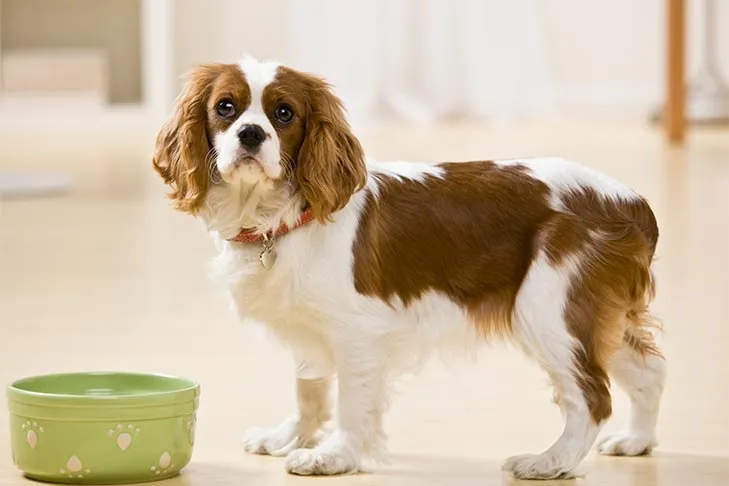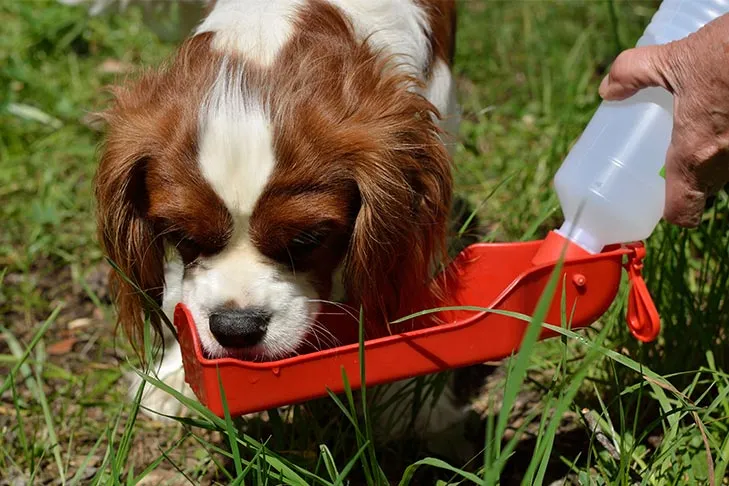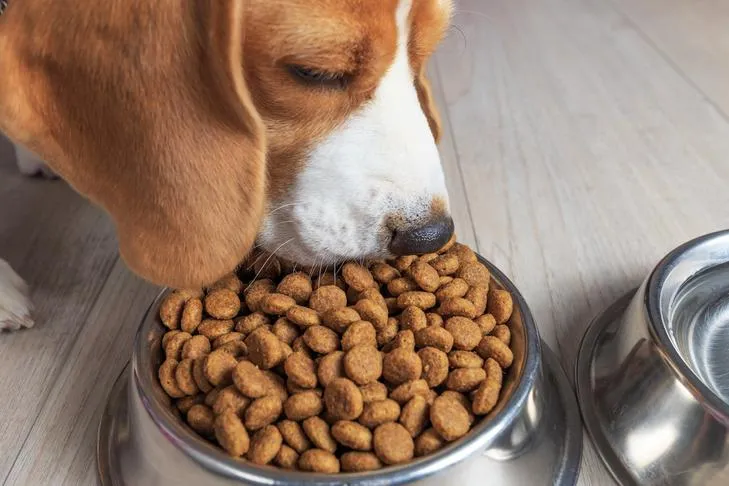Bringing a new puppy home is an exciting time, filled with cuddles, playtime, and learning. As a loving pet parent, ensuring your furry friend has everything they need for a healthy start is paramount. One crucial yet often overlooked aspect is selecting the right Puppy Food And Water Bowls. With countless options available, finding the perfect bowls for your growing companion can feel overwhelming. These aren’t just simple containers; they play a vital role in your puppy’s digestion, hydration, and overall well-being, influencing everything from their eating habits to their physical development. This guide will walk you through the various types, sizes, and materials, helping you make an informed decision to support your puppy’s healthy growth.
Understanding Puppy Needs: Beyond the Basics
Puppies have unique requirements that differentiate them from adult dogs, especially when it comes to feeding and hydration. Their rapid growth and developing systems mean their bowls must cater to specific needs. Young puppies are often clumsy, prone to making messes, and curious chewers. They need easy access to food and water without the risk of tipping or damaging their bowls. Proper bowl selection can also help prevent digestive issues, encourage good eating habits, and even contribute to their dental health. Moreover, consistency in feeding times and access to fresh water are critical for a puppy’s delicate digestive system and overall health.
Types of Puppy Food and Water Bowls
Different dog bowls offer distinct benefits, and understanding these can help you choose the best fit for your puppy’s age, breed, and temperament. From basic designs to high-tech solutions, each type serves a unique purpose.
Standard Puppy Bowls
Standard bowls are the most common and straightforward choice for feeding and watering puppies at home. They come in a vast array of sizes and colors and are manufactured from various materials. For puppies, look for options that are sturdy and have a non-slip base to prevent them from being easily tipped over during enthusiastic meal times. Stability is key for young, energetic pups who are still mastering their eating etiquette. These bowls are often the most convenient option for everyday use and are easy to clean. If you’re looking to explore options for grooming your pup or other supplies, you might want to buy dog grooming supplies online from trusted retailers.
 Cavalier King Charles Spaniel puppy resting next to a standard metal food bowl on a wooden floor.
Cavalier King Charles Spaniel puppy resting next to a standard metal food bowl on a wooden floor.
Elevated Puppy Bowls
As the name suggests, these bowls are raised off the floor. While some large and giant breed dog owners use elevated bowls for adult dogs, believing it makes eating more comfortable, it’s crucial to exercise caution with puppies. Some studies have indicated a potential increased risk of bloat, a serious and potentially fatal condition, in dogs using elevated bowls. For puppies, whose bodies are still developing, the long-term effects are less studied but caution is advised. If your puppy has specific health conditions that you believe would benefit from an elevated bowl, always consult with your veterinarian to determine the best and safest option. Generally, for most puppies, floor-level bowls are recommended.
Slow & Puzzle Feeders
Puppies, especially those who eat too quickly, can benefit greatly from slow-feed bowls and puzzle feeders. Slow-feed bowls are typically made of food-safe plastic and feature raised ridges or mazes inside. These designs create a challenge for puppies, forcing them to eat more slowly. This not only makes meal times more engaging but also helps prevent indigestion, vomiting, and bloat by improving digestion. Puzzle feeders are enrichment toys with various compartments where you can hide your puppy’s meal. They encourage puppies to use their nose, tongue, and paws to “solve” the puzzle and release the food, providing essential mental stimulation and promoting natural foraging instincts. These are excellent for active and intelligent puppies, turning mealtime into a fun learning experience.
Collapsible Travel Puppy Bowls
If you plan on traveling with your puppy, attending training classes, or enjoying outdoor activities like hikes, a collapsible bowl is an essential accessory. These travel bowls are designed to fold flat, making them incredibly portable and space-saving. When needed, they easily pop out to form a full-sized bowl for food or water. They are perfect for ensuring your puppy stays hydrated and fed while on the go, without the bulk of traditional bowls. Their convenience makes them a must-have for any adventurous puppy owner.
 Cavalier King Charles Spaniel puppy outdoors drinking from a portable blue water bowl held by a person.
Cavalier King Charles Spaniel puppy outdoors drinking from a portable blue water bowl held by a person.
Timed Puppy Feeders
For puppies with specific medical conditions requiring precise feeding schedules, or for busy owners who need consistency, timed feeders can be incredibly helpful. These high-tech devices allow you to pre-set a specific amount of food to be dispensed at designated times throughout the day. This ensures your puppy receives their meals consistently, which is vital for regulating their metabolism and supporting their growth. It’s particularly useful for establishing a routine with young puppies or for managing dietary needs while you’re away during the day.
Spill-Proof Puppy Bowls
Puppies are notorious for making messes, especially around their water bowls. Spill-proof bowls are designed to mitigate this common problem. Many feature a floating disk inside that allows the puppy to access water by pushing it down with their tongue, but prevents water from sloshing out if the bowl is accidentally tipped or nudged by a playful paw. This design helps keep your floors drier and reduces the amount of time spent cleaning up after your pup.
Lick or Snuffle Mats
To add extra enrichment to your puppy’s routine, consider incorporating lick or snuffle mats. Lick mats, usually made from food-safe silicone, have textured surfaces where you can spread wet food, yogurt, or soft, puppy-safe treats. The act of licking is naturally soothing for dogs, making mealtime a relaxing and enjoyable activity while also helping with digestion. Snuffle mats are fabric-based mats with various pockets and folds where you can hide your puppy’s kibble. These mats encourage your puppy’s natural foraging instincts, stimulating their minds as they sniff out and retrieve their food, turning a regular meal into an engaging hunt. For those exploring different food options, sometimes local stores offer specific brands. You might search for rachael ray puppy food near me to see if there are convenient options nearby.
Selecting the Right Size for Your Growing Puppy
Choosing the appropriate size for your puppy’s food and water bowls is more critical than you might think. The bowl should be large enough to comfortably hold your puppy’s full meal and an adequate amount of water for their needs, but not so large that they can easily climb into it or spill its contents.
Consider your puppy’s current size and anticipate their growth. A bowl that fits a tiny Chihuahua puppy will be vastly different from one needed for a growing Golden Retriever. The shape and opening of the bowl should also align with your puppy’s facial structure. Puppies with narrow muzzles might do well with smaller, more confined bowls, while those with broader faces will require a wider opening to eat comfortably without straining or getting their face excessively dirty.
Water availability is paramount for puppies, who need constant access to fresh, clean water for proper hydration and organ function. If your schedule doesn’t permit frequent refills throughout the day, opt for a larger water bowl that can hold enough water to last until you can replenish it.
For puppies with long ears, such as Basset Hounds or Spaniels, specialized narrow-mouthed bowls can be a game-changer. These designs help prevent their ears from dipping into their food or water, keeping them clean and dry. This not only aids in maintaining hygiene but also reduces the risk of ear infections and minimizes the need for extra grooming sessions.
Puppy Food and Water Bowl Materials: What’s Safest for Puppies?
The material of your puppy’s bowls is a crucial consideration, especially given their tendency to chew and their developing immune systems. Common options include stainless steel, ceramic, plastic, and silicone. Each comes with its own set of advantages and disadvantages.
Stainless Steel Puppy Bowls
Stainless steel bowls are widely considered the gold standard for durability and hygiene, making them an excellent choice for puppies of all ages. They are exceptionally easy to clean, often dishwasher-safe, and resistant to leaching harmful chemicals into food or water. Their robust nature means they are difficult for puppies to break, scratch, or damage, standing up well to enthusiastic chewing and play. While generally lightweight, some stainless steel bowls come with rubber bases or stands to prevent them from being pushed around or tipped over by an active puppy. Many high-quality puppy foods, including those found at agricultural suppliers, often recommend stainless steel bowls for optimal health. You might find great choices if you look for wholesome dog food tractor supply options.
 Beagle puppy eating kibble from a silver stainless steel bowl on a wooden floor.
Beagle puppy eating kibble from a silver stainless steel bowl on a wooden floor.
Ceramic Puppy Bowls
Ceramic bowls are heavier than stainless steel or plastic, which makes them a stable choice for puppies who might try to play with or tip over their bowls. This added weight helps prevent spills and keeps mealtime neater. When selecting ceramic bowls for your puppy, ensure they are made with non-toxic, food-grade glazes to prevent any potential harm from chemicals. Always check if they are dishwasher-safe, as some ceramic options require hand washing. Keep in mind that ceramic bowls can chip or break if dropped, so they might not be the best choice for exceptionally clumsy or boisterous puppies.
Plastic Puppy Bowls
Plastic bowls are often the most inexpensive and readily available option. Many are dishwasher-safe, offering convenience. However, they come with several caveats, especially for puppies. Plastic bowls are typically lightweight, making them easy for puppies to push around, play with, and tip over, leading to spilled food or water. Puppies can also easily scratch plastic surfaces, creating tiny crevices where bacteria can harbor and multiply, posing a hygiene risk. Furthermore, not all plastic bowls are made from food-safe materials, and some may contain potentially harmful chemicals like BPA. If you opt for plastic, ensure it is labeled as BPA-free and food-grade, and be prepared to replace it more frequently than other materials due to wear and tear or deep scratches.
Cleaning and Caring for Your Puppy’s Bowls
Maintaining impeccable hygiene for your puppy’s food and water bowls is just as crucial as the bowls themselves. Puppies have developing immune systems and are more susceptible to bacterial infections. A dirty bowl can become a breeding ground for harmful bacteria, leading to digestive upset or more serious health issues.
If you feed your puppy wet food, raw food, or soak their kibble, it is imperative to wash their bowls or lick mat after every single meal. In these situations, having several bowls on hand can be incredibly convenient, allowing you to cycle through them without needing to wash a bowl after each feeding immediately.
Even if your puppy primarily eats dry kibble, it’s still best practice to wash their food bowl daily. Food residue can accumulate, and over time, it can lead to a stale or sour smell that might deter your puppy from eating, impacting their appetite. Similarly, your puppy’s water bowl should be refilled with fresh water and cleaned daily. Regular cleaning prevents the buildup of drool, food particles, and other debris that can contaminate the water and encourage bacterial growth.
Regardless of the material you choose, regularly inspect your puppy’s bowls for any chips, cracks, deep scratches, or other damage. Damaged bowls can harbor bacteria or even pose a risk of injury to your puppy’s mouth. If a bowl shows significant signs of wear or damage, replace it immediately with a new, safe option.
Conclusion
Selecting the right puppy food and water bowls is an essential step in providing your new companion with a healthy and happy start. From understanding their unique needs as they grow to navigating the diverse types, sizes, and materials available, each decision contributes to their well-being. Prioritizing stability, safety against chewing, ease of cleaning, and appropriate size will ensure your puppy’s meal and hydration times are comfortable and hygienic. Remember to consult with your veterinarian for any specific concerns, especially regarding health conditions that might influence your choice. By investing time and thought into selecting the perfect bowls, you’re laying a foundation for a lifetime of good health and enjoyable meals for your beloved puppy. For more valuable insights into puppy care, explore other articles on our site!
